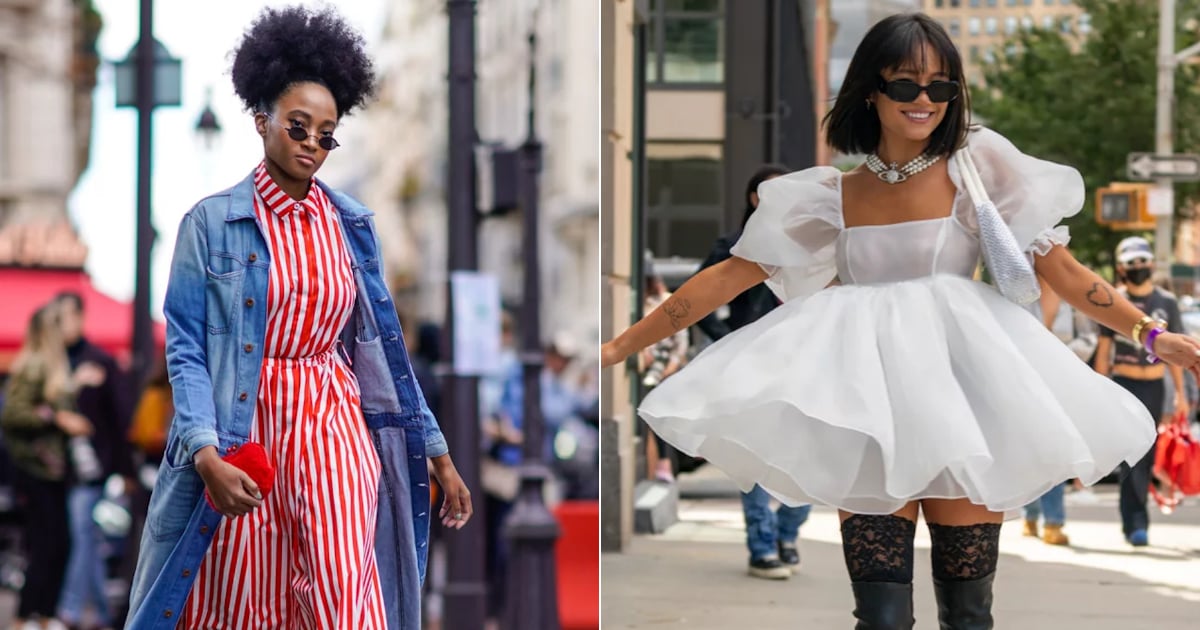DTC vs Wholesale: Striking the Right Balance | BoF Professional, News & Analysis
Supreme made it look easy.
From a single store in downtown Manhattan, the streetwear label built a global empire, generating more than $500 million in sales last year almost exclusively through its own stores and website. In December, the brand was acquired by VF Corp. for $2.1 billion.
Most brands are not Supreme, or even Reformation or Warby Parker, which have built substantial businesses selling direct to consumers online. They lack the buzz or the resources to go it alone, relying on department stores and other retailers for some or the majority of their sales.
But striking the right balance between sales channels, never easy before, is getting harder. Department stores that once championed up-and-coming brands, like Barneys and Colette, have closed, and no single retailer has stepped into the void. The pandemic forced many multi-brand stores to shutter, and left others weakened. Going direct brings its own problems, from shipping logistics to runaway marketing expenses.
What’s a small fashion business to do? The answer to that question often determines whether it becomes a cult favourite, a household name or forgotten entirely.
For some, the Tory Burch approach could be a compelling model. She founded her namesake label 17 years ago with a store and a web shop. Today Tory Burch still generates 85 percent of its more than $1.5 billion revenue from its owned channels, according to market sources, and taps department store partners to sell its accessories in shop-in-shops, where it can control markdowns.
For other brands, relying primarily on wholesale is not just a necessity, but a preference.
”It’s not about one formula that works for everybody,” said Maria Lemos, founder of London-based multi-brand wholesale showroom and communications agency, Rainbowwave. “Whatever you do, you have to do it carefully and strategically.”
Brands should aim for 50 to 80 percent of their sales to be direct-to-consumer — if they can afford it. The more brands know about their clients and the more control they have over how their products are presented, the better they can define their brand identity and understand who their shoppers are and what they want. Brands should aim to generate the majority of their business direct, with most of the transactions taking place online.
Whatever you do, you have to do it carefully and strategically.
However, this approach requires cash to invest in production, web design, customer service and logistics and delivery, among other costs. But the return on investment over the long term of the business can be invaluable.
“It’s becoming more expensive to run that business, but when you do it right, the sky’s the limit,” said Ellen Kinney, president of advanced contemporary brand A.L.C founded by Hollywood stylist Andrea Lieberman 13 years ago and acquired by Interluxe Holdings in 2015.
A.L.C.’s website is the fastest-growing part of its revenue right now, though the business is still majority-wholesale. Kinney’s goal is to get to a 50-50 split, and much of her capital expenditure is going towards the e-commerce site and marketing this year, with improvements in customer experience — including adding videos of models in each garment.
Investing in direct can pay off for smaller brands, too. When Telfar Clemens won the CFDA/Vogue Fashion Fund in 2017, he and his partner Babak Radboy decided to use their winnings to order the first significant lot of the brand’s now-signature tote bag, 500 units, to sell on their site. It quickly sold out, conditioning the brand’s fans to shop directly from them and generating revenue that they used to manufacture more bags.
Online marketplaces that can offset some of the digital marketing costs of direct sales. The competition for online customers is expensive, especially for brands that are starting from a smaller base. Online retailers that don’t hold inventory, taking a cut of about 20 to 30 percent per sale, can give a brand wider online exposure without giving up control of their products — if they can actually attract an audience and help boost traffic to a brand’s own site.
A new wave of marketplaces has launched in recent years, from The Yes to Behold, each promising a different hook, ample marketing and easy use for vendors. A winner hasn’t emerged in the space yet, but it is worth the risk for many brands to experiment with, choosing partners based on the other labels they carry as well as their “values,” whether its sustainability or personalisation.
“[It’s] going to be proven to be a better return on investment than some of the digital marketing that’s been taking place,” said Shan Reddy, a New York-based adviser to independent labels, and help brands compete with pure direct-to-consumer businesses, which were built with the expectation of paying higher consumer acquisition costs.
Rethink what makes a wholesale partner attractive. Wholesale is still essential to many brands because they underwrite production costs and they can make a brand’s products easier to discover and purchase for consumers.
For many brands, online-only retailers have replaced department stores as the core type of wholesale account because they offer wide availability and tap into the fastest-growing sales channel in the industry.
But wholesale partners with store networks, whether they are department stores or independent regional boutiques, still play an important role.
There is still the validation of being picked up by an authoritative department store or cutting-edge boutique to consider, and the boost of being shown alongside other quality brands.
When deciding where to sell, brands should carefully consider which locations they will be stocked in, where their wares will be placed in a store and alongside which brands.
But for many in the industry, a store’s personal relationship with shoppers — if it “can really deliver on that on that physical, in-person side,” as Reddy explained — is the most important factor when considering both online and brick-and-mortar partners.
Brands should prioritise stores that have a strong stable of sales associates, especially on the luxury end of the market, that can offer outstanding customer service.
“This is the time of the private shopper, because it is all about relationships,” Lemos added. The closer a store’s relationship with shoppers, she said, the better a brand will perform there.
Emerging brands with fewer options when it comes to choosing wholesale partners should focus on securing an “anchor client” that they can build a business around with smaller stores, said Martin Bartle, Rainbowwave’s chief operating officer.
Look for stores that believe a brand can be successful and have the risk appetite to give it time to find its audience.
“There are only so many that are willing to take a risk on the unproven and stick with them for two or three seasons, before expecting results,” said Bartle.
But just because a store, for example, carries some sought after brands or is willing to pay favourable terms upfront, doesn’t mean it’s a smart partner — especially if it is new and unproven. Brands should review a store’s point of view and brand mix: what type of customer are they trying to attract and is it clear and compelling?
If a retail partner isn’t increasing brand awareness or helping acquire customers on direct channels, it isn’t a worthwhile relationship, said Kinney.
Don’t rely on one external partner for more than 30 percent of sales. Bartle advises limiting the number of products and volume of production early on to ensure a brand doesn’t overextend itself. When Barneys New York filed for bankruptcy in 2019, the brands that built its business around it were seriously wounded.
The store owed luxury label The Row $3.7 million, according to filings which listed other luxury conglomerate brands among its top creditors. Many smaller brands sold by Barneys, especially fine jewellery ones, have yet to find a way to replace that revenue stream. There have been other sudden closures over the last year, from Totokaelo to Bird Brooklyn.
Customers are not going to go backwards, but they will complement [online shopping] with the physical experience.
Re-evaluate your distribution frequently. In order to avoid becoming dependent on boutiques that have lost their touch or digital channels that are more expensive than what they are worth in revenue, brands need to reevaluate their entire distribution strategies frequently. Review after every season and more thoroughly re-access at least every two years.
With any kind of new relationship, “[put] some type of a timeframe to evaluate whether something’s effective or not,” said Kinney.
A careful review will be essential coming out of the pandemic, during which the share of online luxury sales doubled. E-commerce is projected to represent a third of the total market by 2025, according to Bain & Company. Brands need to ensure that the physical stores they partner with will offer a compelling reason for shoppers to return to stores after it is normal to do so again.
“Customers are not going to go backwards, but they will complement [online shopping] with the physical experience,” said Lemos. “Department stores, retailers will all need to reevaluate how they make the physical experience even more humane.”
Physical can still be a smart investment — especially now. Brick-and-mortar has been the hardest during the pandemic, but there are signs shoppers are eager to get back into stores. Some of Rainbowwave’s clients saw a bustle of store activity last summer when infection rates were lower.
After a brand reaches around $10 million in annual revenue, a brick-and-mortar pop-up or store can be a more cost-efficient way to keep growing than purely online.
At the moment, because of the pandemic, it’s also more affordable for prospective tenants.
Average asking rents for retail spaces declined in all Manhattan areas in the second half of 2020, according to the Real Estate Board of New York, with 11 shopping areas hitting the lowest levels in at least a decade. Lower Fifth Avenue saw the steepest declines, down 22 percent year-over-year to $271 per square foot.
Brands should keep an eye on new opportunities in retail real estate, and see if a wave of pandemic store closures will force landlords to be more flexible after the pandemic.
“There’s going to be a big refresh,” said Reddy, “so that’s going to be a big variable coming up — how people take advantage of that.”
Additional reporting by Lauren Sherman.
Related Articles:
One Big Way Direct-to-Consumer Retail Is Changing
How to Build a One-on-One Relationship With Your Customer
How to Build Wholesale Relationships Without Getting Squeezed





